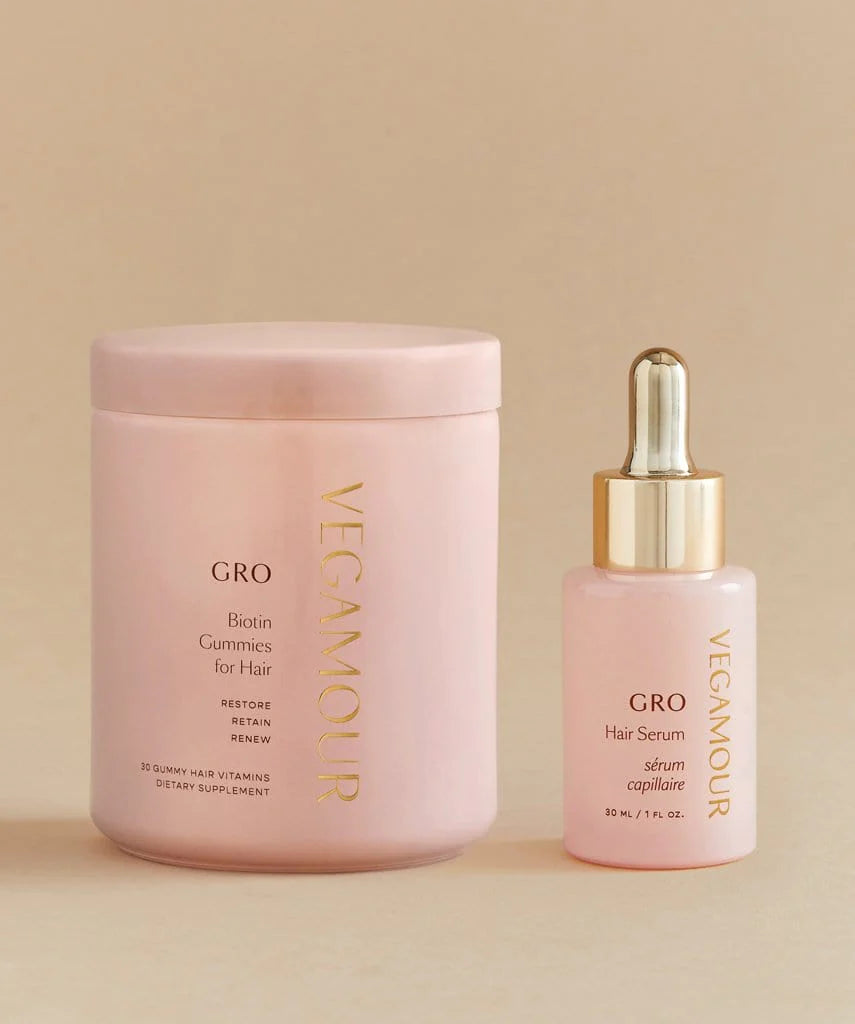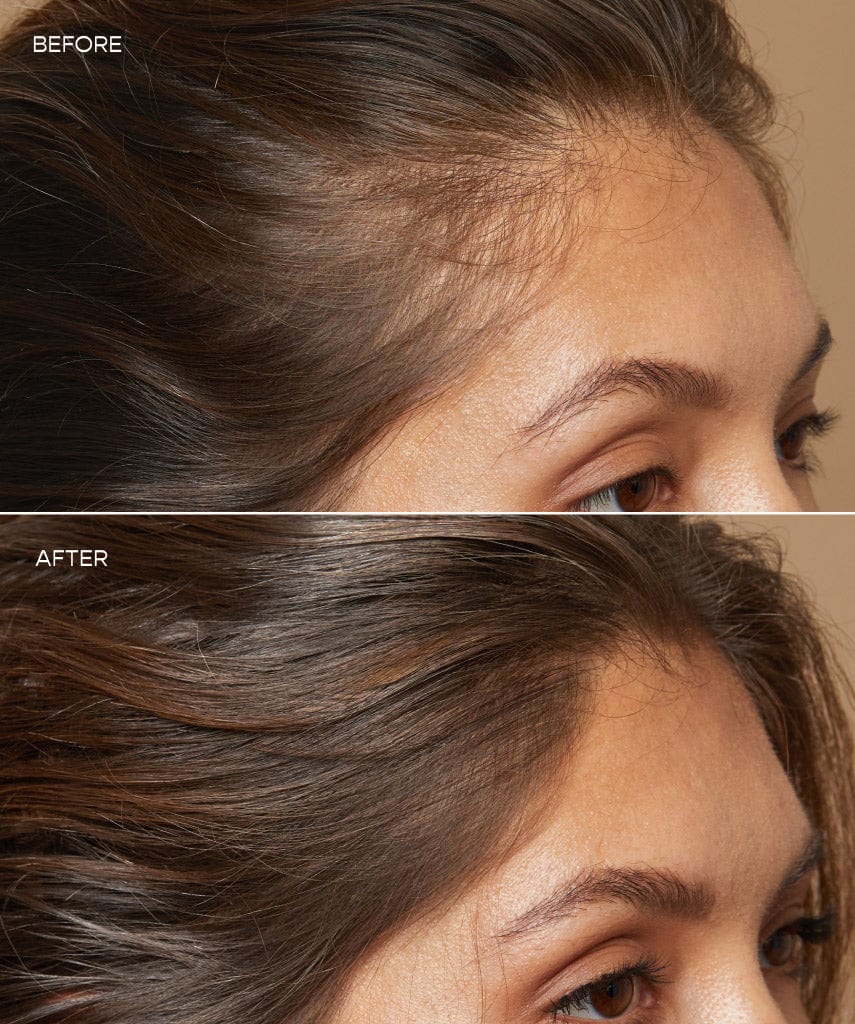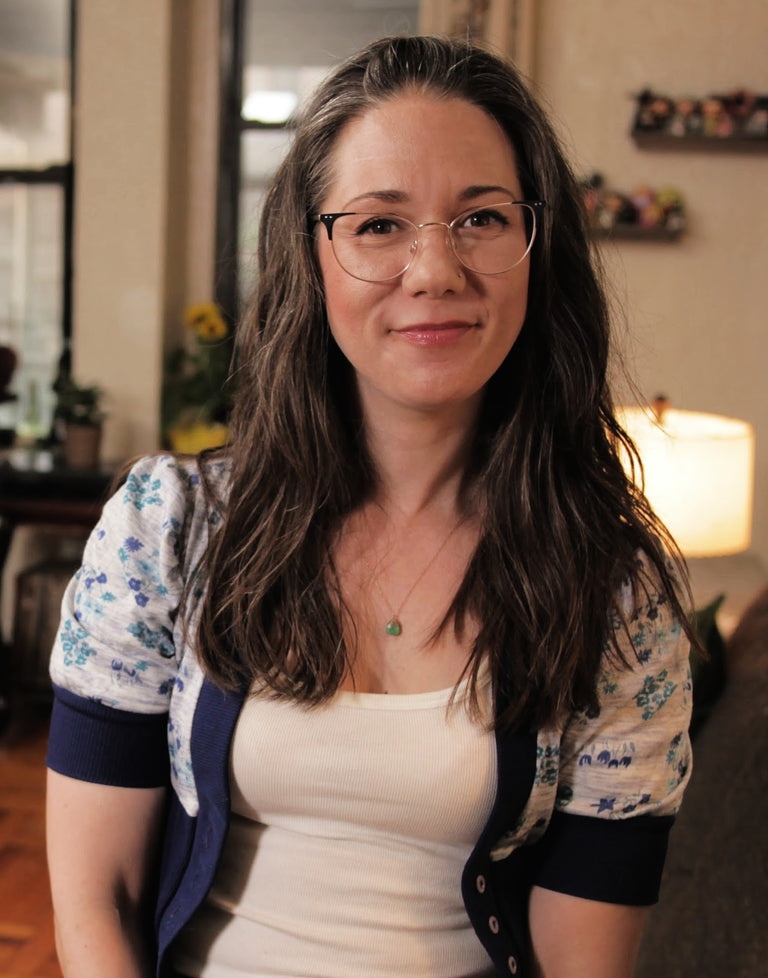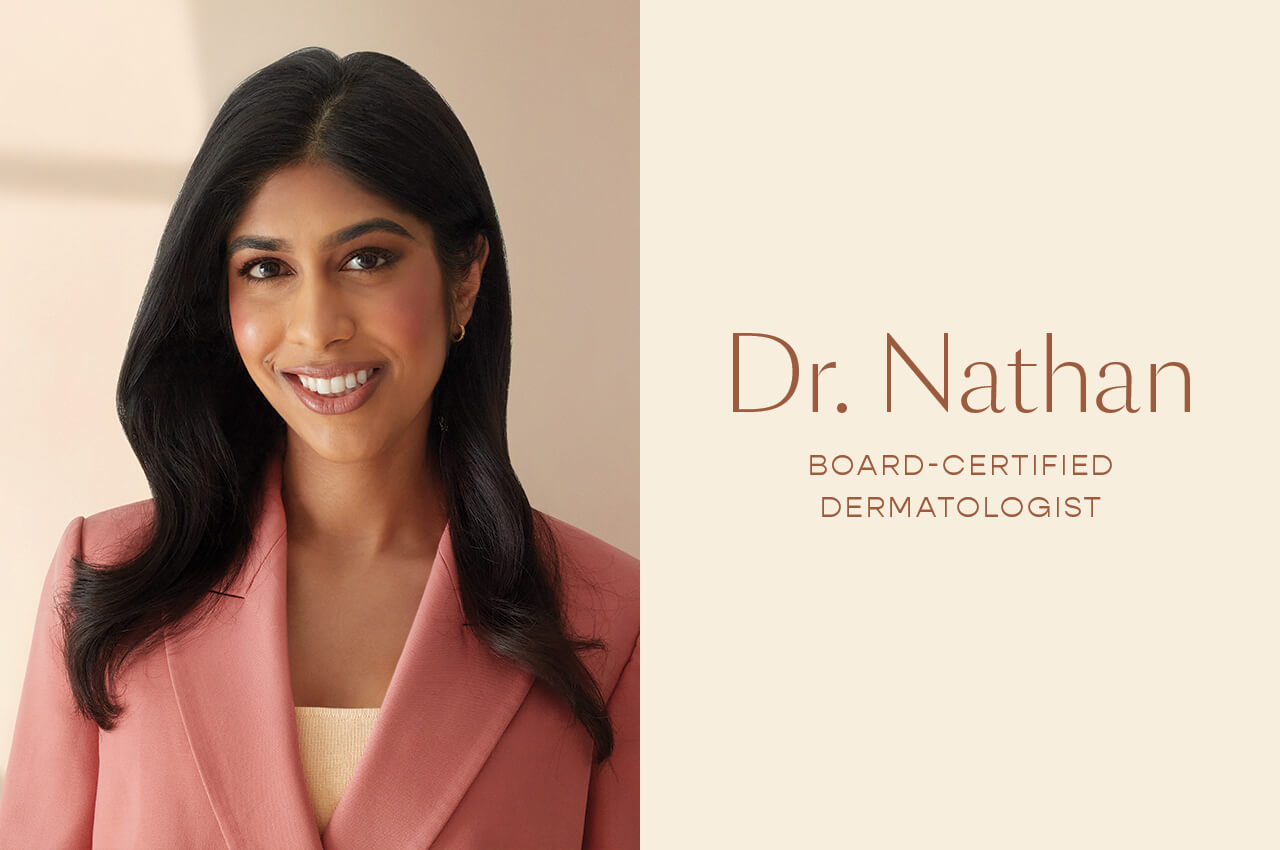While hair loss in adults is more common, adolescent hair thinning and loss is possible. Signs of hair loss in teenagers could signal a health problem, so identifying the underlying cause is important.
Read on to understand why teenage hair loss might be happening — plus, what you can do to combat thinning hair ASAP.
Common Causes of Teenage Hair Loss
Adolescence is an active time in the human body, with puberty and brain development forging ahead. Hormonal changes may impact hair growth, but typically loss and shedding are caused by an underlying issue that is broader than just puberty and hormone levels. Here are a few common causes of teenage hair loss.
SHOP: GRO Collection for Thinning Hair
Telogen Effluvium
Telogen effluvium (TE) is a form of sudden hair loss caused by a major physiological or emotional stressor. Major life changes or the loss of a loved one could trigger this form of hair loss.
Medications could also be behind a case of telogen effluvium. In teenage girls, starting birth control pills could cause a drastic enough change in hormone levels to trigger TE. In teen girls and teen boys, certain medications prescribed to treat acne, for example, might also be the underlying cause of TE.
TE causes uniform thinning over the entire scalp. While it can cause what seems like an alarming amount of hair loss, it’s typically no more than 30% of hair. The good news is that TE is considered a temporary (not permanent) disruption to the normal hair growth cycles.
Trichotillomania
Trichotillomania is a psychological disorder where hair is compulsively pulled out. It can be experienced as conscious hair pulling, but it can also involve unconscious hair pulling and often results in bald patches. Because trichotillomania is driven by compulsive hair pulling, it’s best treated with the help of a mental health professional. Often, when stopped early, the hair loss caused by trichotillomania is reversible. If the hair pulling goes on for long enough, however, it can permanently damage hair follicles and inhibit regrowth.
#include-related-slider#
Traction Alopecia
This form of hair loss happens over time when hair follicles are exposed to the repeated stress of tight hair styles or other harmful hair care practices, such as tight buns or ponytails, braids or hair extensions and chemical treatments. When exposed to tension over the long term, damaged follicles stop growing hair, and you’ll often notice thinning hair at the temples and sides of the head.
The only way to stop traction alopecia is to stop the offending hair care practices. While the stress to follicles could cause permanent hair loss, growth typically resumes within a few months.
Nutritional Deficiencies
Keeping up a healthy diet and good eating habits can be a challenge for teens. Hydration, blood sugar regulation and adequate protein intake are essential for healthy hair growth and can cause a negative impact when your diet is less than ideal. A daily intake of vitamins, like A, E and B-7 (aka biotin), is also essential for hair health.
Eating disorders, like anorexia nervosa and bulimia, might also be an underlying cause of a nutritional deficiency in adolescents and are the third most common chronic illness in adolescent females.
Also: These Vitamin Deficiencies Can Cause Hair Loss
Alopecia Areata
Alopecia areata is an immune system disorder characterized by round coin-sized bald spots. “Put simply, alopecia areata is when your own immune cells attack hair follicles,” said Dr. Kim Langdon, a medical doctor with Parenting Pod.
Alopecia areata can develop at any age, including adolescence. However, it tends to happen before age 40. More severe forms of this condition, like the complete baldness that comes along with alopecia universalis, tend to begin in childhood and adolescence.
Learn: What Is Alopecia Areata?
Androgenetic Alopecia
Androgenetic alopecia (AGA) is a hair loss condition that is commonly called male pattern baldness, but it’s a condition that affects females too, so it also goes by female pattern baldness. Despite its prevalence and characteristic receding hairline, which affects about 80 million people in the United States alone, there is much the academic research institutions and private companies studying AGA have yet to uncover.
What we do know is that a group of hormones, called androgens, are involved. Androgens are often referred to as “male sex hormones,” but everyone has (and needs) androgens. Another piece of the puzzle? “Genetics play a role in both female and male pattern baldness,” explained Dr. Langdon. It seems that what causes AGA is a genetic predisposition to androgen sensitivity in hair follicles, which leads to hair thinning and can lead to eventual baldness. And AGA can begin in both teenage boys and teenage girls.
About 15% of adolescents experience what is called “early-onset AGA,” which usually appears at 14 in girls and 15 in boys.
Understand: Androgenetic Alopecia Explained
Polycystic Ovary Syndrome
Polycystic ovary syndrome (PCOS) is another autoimmune condition that can impact hair. Like AGA, androgens are thought to be involved in PCOS. The hormonal imbalance caused by higher levels of androgens can impact a female’s menstrual cycles, insulin levels and weight. It can also impact follicles and hair growth cycles. While it’s common for adult women to discover they have PCOS when they have trouble conceiving, the syndrome can start soon after their first menstrual cycle in adolescence.
Find Out: What You Can Do For PCOS-Related Hair Loss
Holistic Ways to Support Hair Health
No matter the underlying cause of hair loss in teenagers, there are some universal and holistic ways to support hair health and improve hair growth.
Practice Healthy Habits
One great way to support healthy hair growth is through healthy habits that support general health and well-being. Getting adequate sleep (teens need 8-10 hours per 24 hours) and regular exercise are pillars of good health. A balanced and healthy diet is also important.
“Teens should avoid highly processed foods and substitute them with a balanced diet composed of natural foods including lots of fruits and vegetables,” said Dr. Daniel Boyer, a medical doctor and researcher with the Farr Institute.
When a regular healthy diet is tough, try hair-friendly vitamins like our multivitamin GRO Biotin Gummies. Just one delicious, strawberry-flavored gummy per day provides biotin, folic acid, zinc and Vitamins B-5,6 and 12 and A, C and E to promote fuller-looking, shinier hair.
Use a Serum
Encourage thicker, fuller-looking hair with our bestselling GRO Hair Serum. The serum, is packed with powerful vegan ingredients. It can:
- Reduce signs of shedding by up to 85%*
- Increase the appearance of hair density by up to 56%*
*Based on a 120-day independent, third-party clinical study with 40 participants using GRO Hair Serum once daily.
pply a dropperful of this non-greasy serum all over the scalp once daily to dry or towel-dried hair.
Follow a Gentle Hair Care Routine
When regrowing hair after thinning or loss, it’s necessary that follicles get some extra tender loving care. Be gentle and avoid aggressive combing, and no brushing hair when wet! “It’s also important that you preserve hair follicles by avoiding excessive pulling on the hair that’s caused by wearing tight ponytails or braids,” said Dr. Jae Pak, medical doctor and hair loss specialist at Jae Pak Medical. Also, avoid excessive heat styling and chemical treatments.
Try a pillowcase designed to reduce friction while sleeping, and use gentle scrunchies wearing hair up. Additionally, a daily scalp massage has been shown to help encourage new growth and blood circulation to the scalp.
Be Patient
While it would be nice if you could get the results you want in just a few days, hair changes takes time. On average, hair grows about 6 inches per year, so it may take some time for the body to reset and visible regrowth to come in.
When to See a Doctor About Teenage Hair Loss
If you, or your teenager, has thin hair or is experiencing excessive shedding, it’s best to see a doctor as soon as possible. As covered, there could be any number of factors causing or contributing to the hair loss. A doctor will be able to identify the underlying cause and advise you on the most appropriate hair loss treatment.
Support for Teens Coping With Hair Loss
Hair loss is a stressful experience for most people, but it can be especially tough for teens who are acutely aware of their peers' opinions while learning to build healthy self-esteem and confidence.
Support — from adults, friends and even trained counselors — is something that should be extended to teens who feel stressed while coping with losing hair.
#include-related-slider#
The Takeaway
Hair loss in teenagers, though less common than in adults, is possible. The best way to treat hair loss in teenagers is by seeing a doctor because there are a variety of reasons a teen might be experiencing hair loss, and you have many options to support thicker looking hair. Seeing a doctor is key, along with healthy habits like gentle hair care, adequate sleep, a balanced diet and regular exercise and stress management.
More From VEGAMOUR
- How Long Does It Take for Hair to Grow Back?
- What Causes Sudden Hair Loss?
- Can ADHD Medications Cause Hair Loss?





















